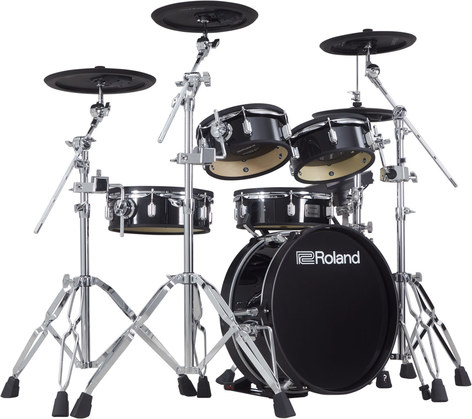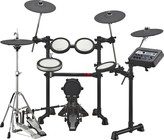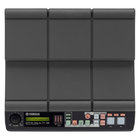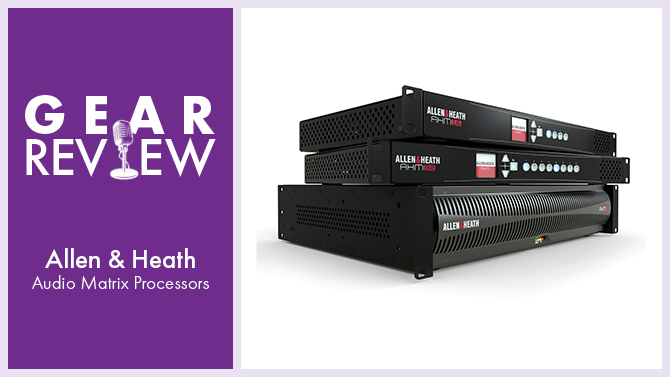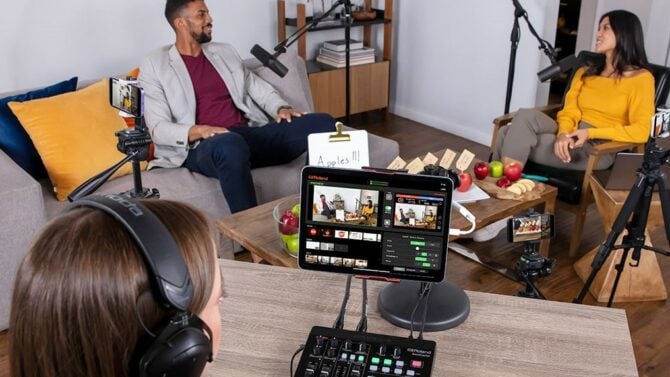For some, the phrase “electronic drums” conjures up images of hexagonally-shaped pads played by new wave bands like Flock of Seagulls. If you were into that sound, then electronic drums were the state of percussion art. If your preferences ran to acoustic kits, then they may have sounded ersatz and synthesized. Either way, one thing was sure: They were expensive. Electronic drums were a major investment, and unlike acoustics, there were relatively few low-cost options.
In the years since, much has changed in the world of electronic drums. The shape, the sound, the price-points, and the options have all expanded considerably. Not only are there many affordable options in electronic drums, but in many cases, they could be the best choice for a beginning drummer.
In the next few paragraphs, we're going to lay out a few of the key issues to consider when purchasing an electronic drum kit or expanding your existing percussion pallet to include electronics.
Why Buy Electronic?
There are a number of excellent reasons to consider electronic drum options. For apartment dwellers, electronic kits help keep the peace with your neighbors, as the volume can be turned lower than even a fairly light touch on an acoustic kit can offer. And by plugging in headphones not only can you eliminate most of the noise but many kits will allow you to run music directly through the kit so you can play along with your favorite tunes.
In terms of sound, contemporary electronic kits offer many more options than their antiquated cousins. Most electronic options can be programmed to sound indistinguishable from acoustic drums. They also often include options for percussion sounds from tablas to timpanis and go-go bells to güiros. Additionally, for those looking to go deep into the options, many electronic drums can offer customization options to enable the creation of your own unique sounds.
As for price, today it’s possible to buy really good electronic drums at every price point, from beginner to professional. If you can afford an acoustic kit, chances are you can afford an electronic kit. And the customization options mean that for the price of one kit, you have access to a larger variety of sounds.
Drum Pads, Triggers, and Drum Machines
The first question that anyone looking to get into electronics needs to ask is: Pads, triggers, or drum machines? These aren’t mutually exclusive options, but each of them offers their own advantages.
- Drum Pads are designed to be struck with a stick or mallet like an acoustic drum. The playing surface is connected to a sensor which signals the sound module to produce a pre-programmed sound or effect. Often drum pads are designed to look and function like an acoustic kit, with pads for bass drum, snare, toms, and cymbals. But in other cases, such as the Roland Octopad or Yamaha’s DTX Multi-Pad, the pads are placed together on a single surface. The key advantage to these drums is that they provide a familiar playing area for acoustic drummers looking for something new to hit. One consideration for those leaning toward a pad-based set up is whether to invest in rubber or mesh heads. Each has advantages, but which to choose is a matter of preference. While rubber heads tend to be more economical and resilient
 Definition:
Definition:
Meaning flexible or soft. Resilient materials absorb sound and vibration., mesh heads tend to feel more like hitting an actual drum. Mesh heads, unlike rubber heads, can also be tuned to reproduce the feel of a mylar drum head. - Triggers attach to an existing drum set. When you hit the playing surface of your drum, they send an electric signal to the sound module, “triggering” the programmed effect. This allows for the drummer to get a wide variety of sounds and effects without having to swap out their existing kit. Here again, price options can vary widely, depending on how many triggers and what kind of sound module you are planning to invest in. A key factor with both drum triggers and pads is the question of latency
 Definition:
Definition:
The amount of delay a signal, data, sound, video, or control signal acquires within a device, system, or long-distance connection.. What’s latency? It is the fractional delay that occurs between hitting the playing surface and hearing the effect through the speaker. Typically, the delay is a matter of only a few milliseconds. Typically, the lower the latency, the smaller the gap between input and output, but in most cases, latency in modern electronic drums is barely noticeable. - Drum Machines can be a useful tool even for drummers who are committed to sticking with the kit. While they are most prominent in hip-hop, they are widely used in other genres as well. They can be used to back up or add texture to an acoustic or electronic drum kit in a live setting, or provide access to a percussion library for those musicians who want drums, but not necessarily the drummer.
Output
A final consideration in buying electronic percussion is the means by which the signal actually reaches the ear. As with any electronic instrument, there are many options for amplification, and in the case of electronic drums there are drum amplifiers specially designed to optimize the sound of the instrument. At the end of the day, whether you buy a specialized electronic drum wedge, use your old battered guitar amp Definition:
Definition:
Abbreviation for either Ampere or Amplifier., route it through headphones, or run it through a high-end sound board Definition:
Definition:
Composite building board which is used in floors and walls to reduce sound transmission., the ultimate question is what you need the drums to do for you, and what kind of sound will help you achieve your goals. For the beginner, it may be more than adequate to run the kit through a set of headphones or your computer’s speaker. For those going for a professional sound, however, it’s a question of how much you’re willing to invest in making that sound a reality.
Final Thoughts
Electronic drums have come a long way since the '80s. Price, feel, and versatility are light years ahead of where they once were. For players looking to jump into electronic drums, there are plenty of options at every price point. And for acoustic drummers just looking to experiment, there are plenty of ways to dip a toe into the scene. At the end of the day, it isn’t an either/or proposition. With the cost of drums what they are today, drummers can invest in both acoustic and electronic sounds without worrying about breaking the bank. The ultimate question is what sound you want to produce and what tools will help you to produce it.
Full Compass stocks an extensive selection of top brand electronic drums for most budgets and skill levels or contact our Sales Pros at 800-356-5844 for expert advice on finding the right kit.



